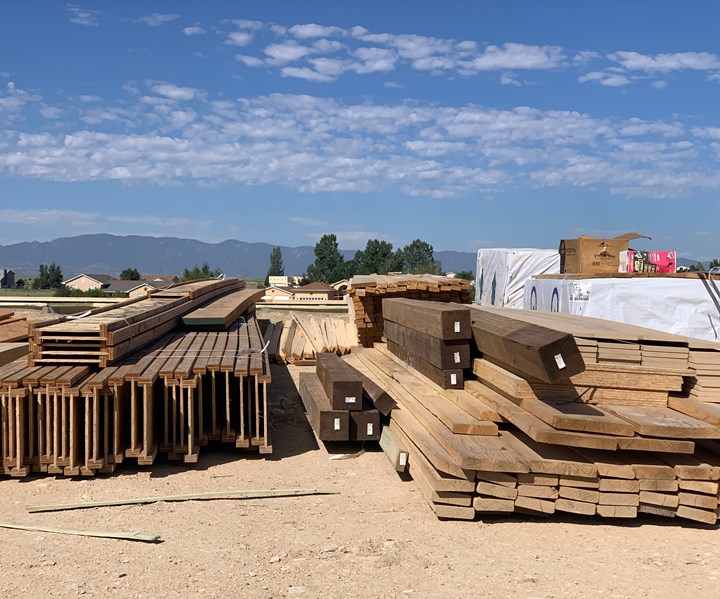High-Performance Composites for Eco-Friendly Building
High-Performance Composites for Eco-Friendly Building
Blog Article
Unlocking the Environmental Benefits of Recycled Composites in Building and Layout
In the world of building and construction and layout, the usage of recycled compounds holds considerable pledge for enhancing sustainability methods and lowering ecological influence. The change in the direction of an extra lasting future in these sectors pivots on opening the complete possibility of recycled compounds.

Ecological Influence Decrease
The decrease of environmental impact via using recycled compounds in building and layout plays an important role in sustainable methods. By including recycled composites into structure products, the construction market can substantially decrease its carbon footprint and add to a more eco-friendly future. These lasting materials, made from repurposed plastics, wood fibers, or other recycled elements, provide a sensible alternative to typical building and construction materials without endangering on top quality or sturdiness.
Recycled composites help draw away waste from landfills and lower the requirement for removing basic materials, thus conserving natural deposits. Additionally, the production process of these compounds frequently eats much less power and releases less greenhouse gases compared to generating virgin materials (composites). This change towards utilizing recycled composites not only decreases environmental injury but additionally promotes a circular economic situation by motivating the reuse of materials that would or else be disposed of
Waste Reduction
With a concentrate on lessening waste in construction and style, the combination of recycled compounds provides a lasting remedy to decrease ecological influence. Waste minimization is an important element of lasting practices, and making use of recycled compounds offers an opportunity to achieve this goal properly. By utilizing products that have actually currently served their first purpose, such as recycled plastics or recovered wood fibers, the building and construction and design industries can substantially lower the quantity of waste created and sent out to landfills.
Recycled composites have the prospective to divert substantial amounts of waste from typical disposal techniques, adding to a much more circular economic climate where resources are utilized successfully. In addition, the manufacturing procedure of recycled composites frequently eats much less energy and creates less exhausts compared to virgin products, even more reducing the ecological impact of building and construction and design projects.
Applying waste minimization techniques via the incorporation of recycled composites not just assists in preserving natural deposits but additionally advertises a much more sustainable technique to building and developing for a greener future.
Energy Preservation
Including recycled composites not only minimizes waste in building and construction and design yet likewise plays a critical function in improving power preservation practices within the industry. Making use of recycled compounds in building can considerably add to power conservation via different means. The manufacturing of virgin materials commonly needs significant power inputs, whereas utilizing recycled compounds eats less power, consequently decreasing overall power intake. Additionally, integrating recycled compounds can add to better insulation homes in structures, reducing the requirement for too much heating or air conditioning, and subsequently lowering power use for environment control. Additionally, the light-weight nature of many recycled composites can cause lighter frameworks, he said requiring less power for transport and installation. By advertising making use of recycled compounds in building and layout, the sector can make substantial strides in the direction of attaining power efficiency and reducing its carbon footprint, ultimately adding to a more sustainable constructed atmosphere.
Carbon Footprint Reduction
Enhancing sustainability practices through the use of recycled composites in construction and design significantly lowers the carbon impact of the market. By incorporating recycled products right into the production of compounds, the demand for virgin resources lowers, leading to reduced energy consumption and greenhouse gas exhausts related to standard manufacturing procedures. This reduction in carbon impact is important in combating climate change and advertising a much more eco-friendly technique to construction and layout.
Additionally, using recycled compounds likewise aids in drawing away waste from landfills, consequently alleviating the environmental effect of disposal and promoting a circular economic climate. The carbon impact decrease achieved via the adoption of recycled composites aligns with the international press towards sustainable techniques and the reduction of commercial emissions. It showcases a commitment to liable resource administration and a change towards greener choices in the building and layout industries. Eventually, by focusing on the combination of recycled compounds, the industry can make considerable strides in decreasing its carbon footprint and adding to an extra lasting future.
Lasting Future
The integration of recycled compounds in building and design not just addresses instant ecological worries however also lays a solid foundation for a this content sustainable future in the industry. By integrating recycled composites into structure materials and items, the construction and style industries can significantly minimize their reliance on virgin sources, leading to an extra circular economic climate. This change towards sustainability is important for minimizing the environmental influence of standard building and construction practices, which frequently cause high degrees of waste generation and resource deficiency.

Conclusion
In conclusion, recycled composites offer significant ecological advantages in building and construction and design more information by decreasing ecological influence, minimizing waste, preserving energy, reducing carbon footprint, and promoting a sustainable future. Accepting making use of recycled compounds can add to an extra environmentally-friendly strategy to structure and style, eventually resulting in a more lasting and greener future for all.
The decrease of ecological impact through the usage of recycled composites in building and design plays a critical duty in sustainable practices.With a focus on decreasing waste in building and style, the integration of recycled compounds provides a lasting option to minimize environmental impact. By advertising the usage of recycled composites in building and construction and style, the industry can make substantial strides towards attaining energy effectiveness and minimizing its carbon impact, inevitably adding to a much more sustainable built environment.

Report this page